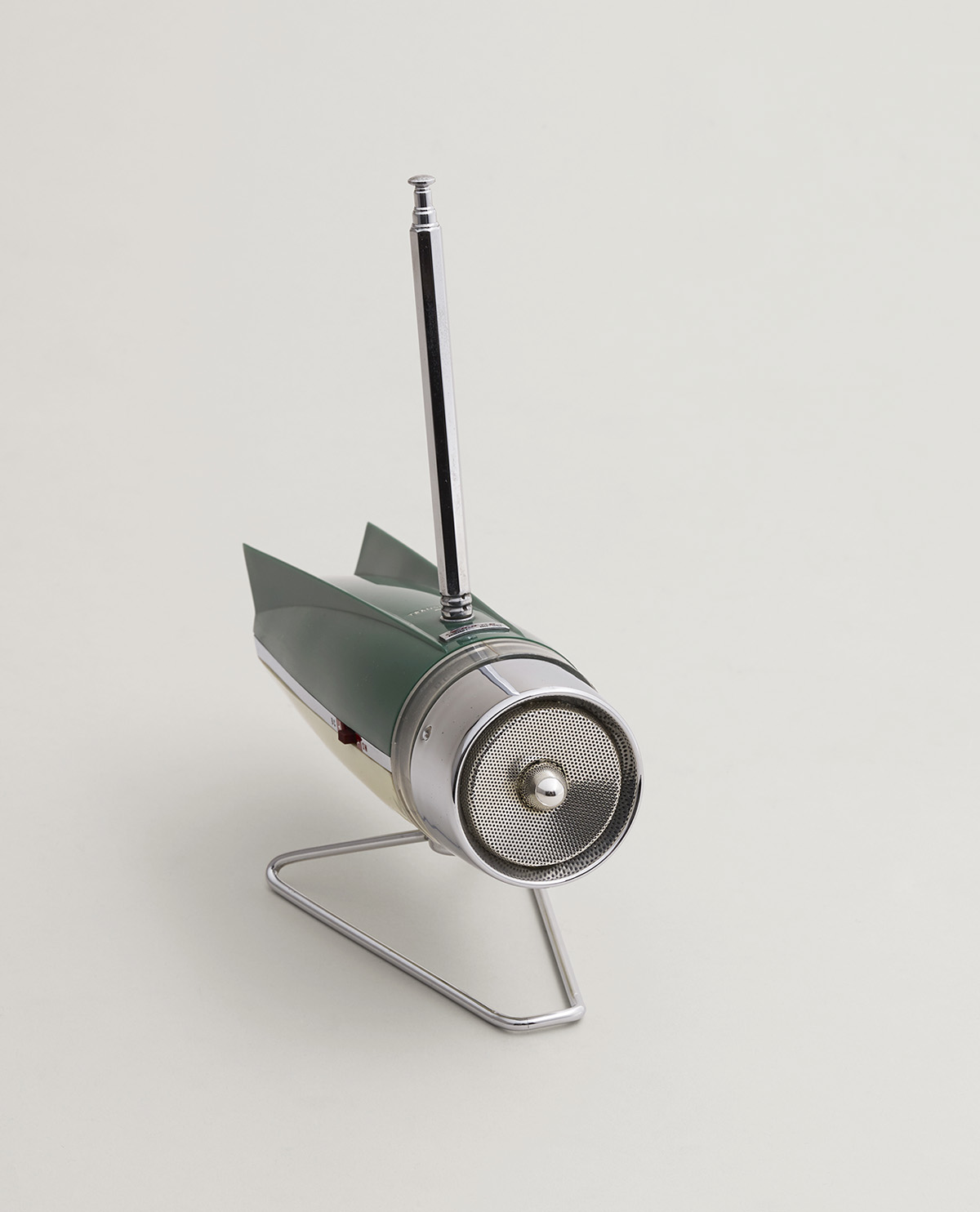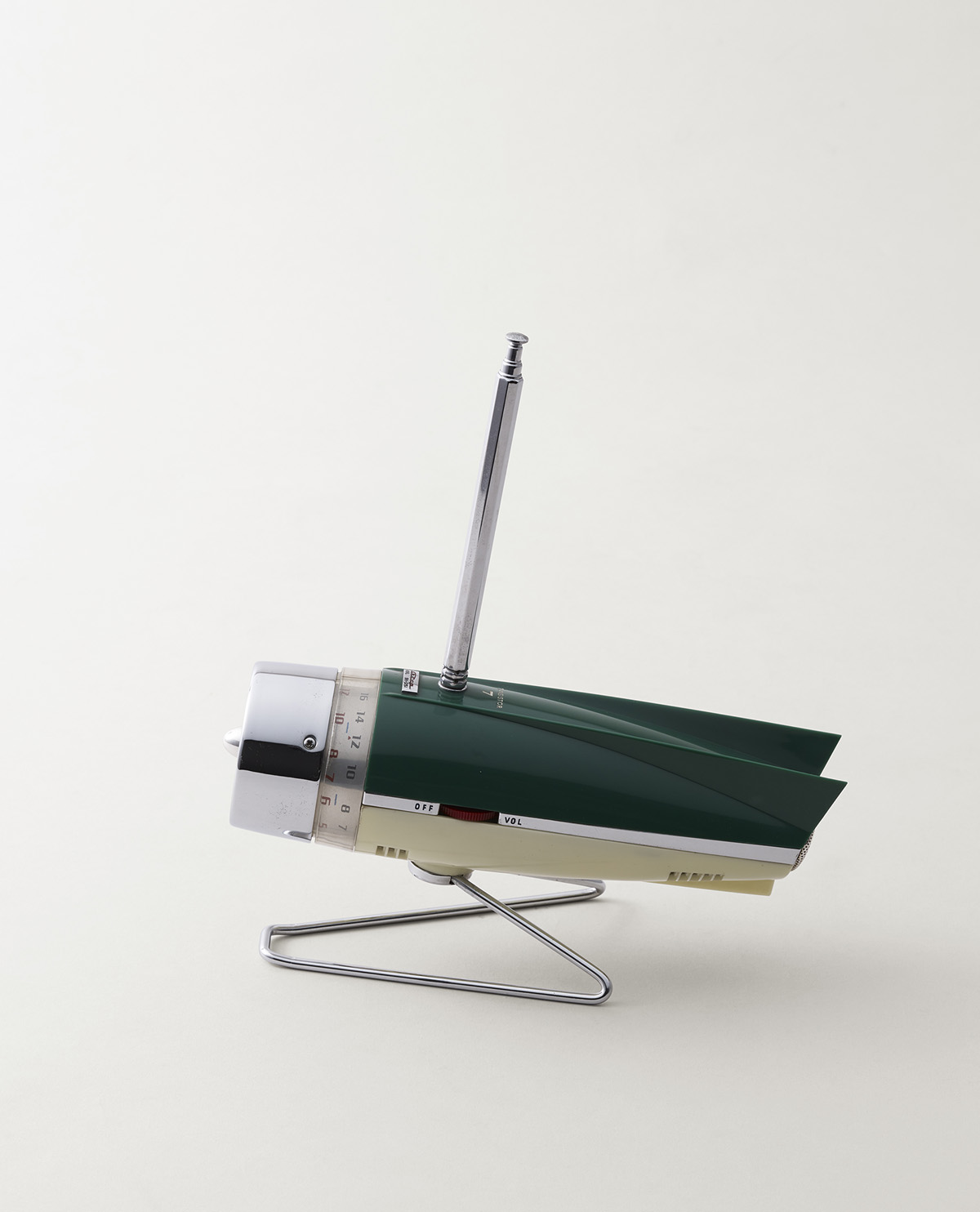IN HISTORY
1959 Tranket Transistor Radio
“IN HISTORY”: Sharp and design in history – A joint project with Sharp Museum commemorating its 40th anniversary.
Hello, I am Nakatani from Sharp Museum. This is a series where Sharp Museum staffs Fujiwara and Nakatani talk randomly about products and history of Sharp. I hope this will be an opportunity for you to find interest in Sharp’s history in some way.
This time I will introduce the 1959 Tranket transistor radio. Is it a torch? No, it’s not!

Growing Expectations toward Design
1955 and on was when Japan rapidly grew wealthy after post war recovery.
It was a time when more products for home use were introduced, and people started to pursue material desire and find happiness in fulfilling those needs. The whole family watching TV in the living room together under a bright ceiling light, moving into newly constructed apartments, owning cars were some iconic goals at that time. As people’s interest started to rise in consumer durables centering home appliances, not only features and functions but its shapes, colors and touch became important factors of purchase, drawing attention to product designs.
Makers hired more industrial designers, and creating the exterior of products that used to be completed by the engineer with the development design changed into a joint process of engineers and designers. At the time, plastic was newly introduced and played a crucial role in designing. By utilizing plastic in the cabinet part instead of metal sheets, wood and glass, the freedom in shaping and coloring increased, and many unique products in variety appeared.

Space Boom
In these days of pursuing wealth and desires, a huge event occurred that brought everyone’s attention toward space.
In 1957, former U.S.S.R. succeeded in launching the first artificial satellite Sputnik into space.
This incident led to a space boom in Japan. A model of Sputnik was hung on the ceiling and displayed at the front hall of department stores, bars featuring space appeared, and even police officers dressed up in space uniforms to call on people’s awareness toward crime. Under such booming of space, many home appliances that related to space appeared as well.
In 1959, Sharp introduced a rocket shaped transistor radio, naming it Tranket sold at 10,980 yen at that time, when the initial salary of public servants was 10,200 yen.
It came in two colors, green and red. The speaker part was also used as a dial for tuning, which was new at that time. An exclusive attachment sold at 95 yen enabled to attach the radio to bicycle and bike handles, and with its durable design against vibration, it could be used even running on rugged roads. With a leather case sold a 590 yen, the radio suddenly became portable for outdoors, skiing, and climbing. There was even a lottery for each purchase, claiming “Win 100,000 yen as savings for moon traveling (we’re talking space, right?) and a TV!” You can see people’s desires and dreams from these, and children must have had large expectations to the future.

Still Loved at the Museum
Currently we display the green model at Sharp Museum.
Most visitors double check the product, and give an impressed awe while approaching it, and say “I wish I could own this.” There was one visitor who came all the way from Kanto just to see this in real. It was very impressive seeing the person taking many photos from all directions, carefully observing it and happily mentioning “It looks like a classic American car.”
This is definitely one of the most loved displays at Sharp Museum.

That’s it for this time. Next we will introduce our AQUOS mobile phone.
[Sharp Museum commemorated it 40th anniversary on November 2021]
This is a series of Sharp Museum staffs Fujiwara and Nakatani talking randomly about products and history of Sharp. I hope this will be an opportunity for you to find interest in Sharp’s history in some way.